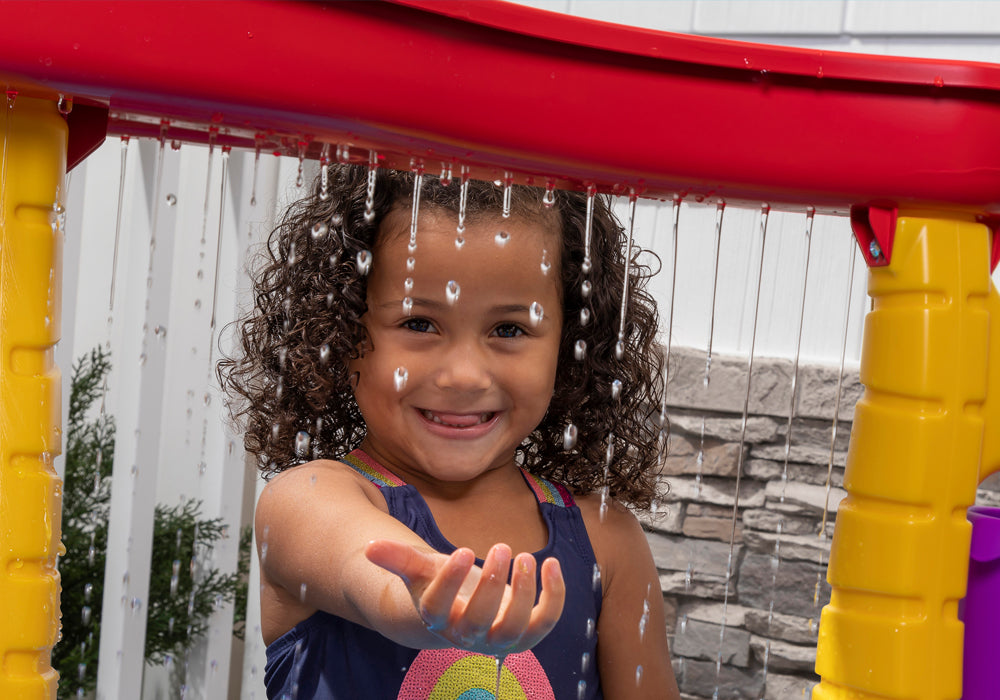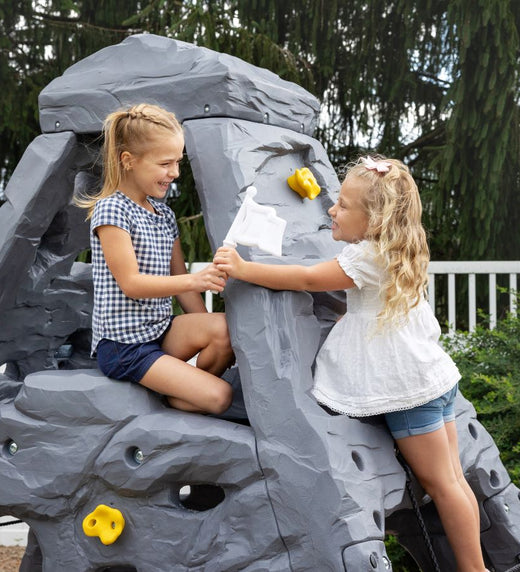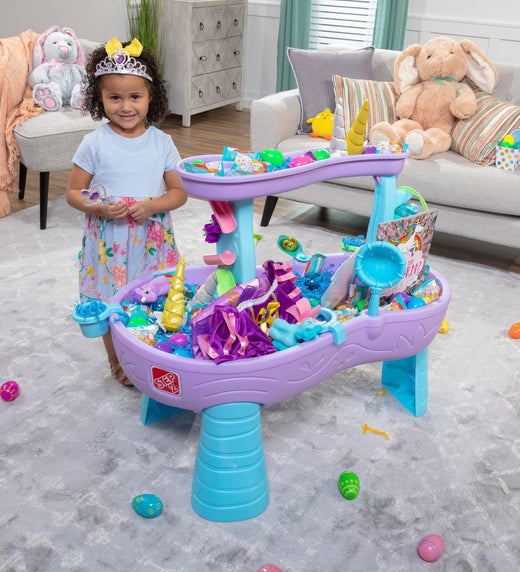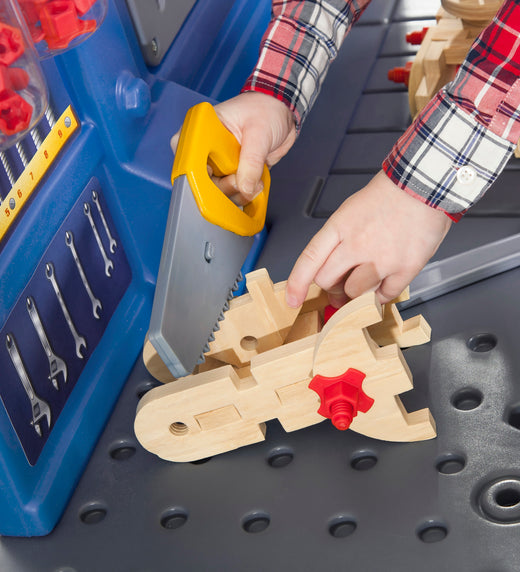
From the moment a child is born, they begin learning through their senses. They feel the soft touch of a bottle at their lips and know it’s time to eat. They hear the soothing sound of their mom’s voice and feel the strong embrace of their father’s arms. Through their senses, infants, toddlers, and older children learn about and make sense of the world around them.
Sensory play is a great—and fun—way to help children learn. Through play, various senses stimulate the brain, allowing children to identify objects, categorize new knowledge, and differentiate varying information. It’s a crucial foundation for developing skills they’ll need in the future, and sensory exploration plays a big role in our toys at Step2.
What Is Sensory Play?
Sensory play is any play that stimulates the five senses: hear, touch, see, smell, and/or taste. All five senses do not need to be engaged in order for it to be sensory play. Simply splashing in water, listening to different musical instruments, tasting different fruits, or feeling the texture of tree bark is considered sensory play. However, the more senses engaged, the better!
What Are the Benefits of Sensory Play?
As we mentioned before, sensory play gets the mind working. Stimulating the senses helps children to develop cognitive, social-emotional, physical, and language skills—all the major areas of childhood development!
Children of all ages—infants, toddlers, preschoolers, and grade-school kids—benefit from sensory play. Infants and toddlers stick everything in their mouths, touch anything they can get their hands on, and make silly sounds with their mouths.
These actions aren’t random; it’s how they discern between objects and absorb new information. By sticking items in their mouths, infants and toddlers learn what’s food and what’s not. By touching and grabbing objects, they learn what’s soft, what’s hard, and what’s textured. When little ones make funny sounds, they’re practicing how to create different noises, which will later help them with their first words.
As children grow older, their sensory play matures as well. Older children can group objects by texture, shape, and color. They can use scientific methods to examine, investigate, and discover new sensations. Kids can learn the difference between hot, cold, and warm as well as the difference between large, medium, and small.
Sensory Toys for Kids
Children can engage in sensory play with everyday objects: uncooked rice, leaves, water, and more. However, there are several toys that are designed specifically with sensory play in mind.
Water and sand tables are two of the most popular forms of sensory toys for toddlers and kids. Children can feel the different textures of sand vs. water, and they can discover what happens when water is added to sand. When playing with sand and water tables, kids can hear the splashing of water and the sound of sand sifting through a scoop.
Several sand and water toys have various accessories and functions to enhance sensory play. For example, the Step2 Dino Dig Sand & Water Table™ has a covered sand pit and water table area, so children can play with both areas. Children can pour water over the mountain—which doubles as the sand box lid—and watch as the water trickles down over the layers. When they remove the lid, they can stomp the included dino toys through the sand and create sand castles when they add water.
With the Step2 Car Wash Splash Center™, children can engage sight, sound, and touch. They can watch the water pour over the windshield and move throughout the maze pieces. Kids can hear the beep of the horn, squeak of the windshield wipers, and glug of the watering gas can.
Although sand and water tables are some of the most popular sensory toys, there are many other toys that stimulate the senses as well. A kid’s coaster is a great way to experience movement, sight, and sound! As children roll down the track, they see their surroundings speed up around them, feel the wind through their hair, and the sound of the wheels trumping over the tracks. They also engage in physical activity when they roll the cart back up to its starting position.
Building Child Development Skills Through Sensory Play
When children engage their sense of sight, sound, touch, taste, and smell, they’re sending powerful signals to their minds. Their brains are retaining, categorizing, examining, and understanding information through the use of their senses.
When play is involved, sensory exploration opens the door to many exciting learning opportunities. Through sensory play, your little ones will develop the building blocks for important life-long skills, such as cognitive, language, social-emotional, and physical development.
Create fun sensory experiments at home or engage in sensory toys from Step2 that are specifically designed with childhood development in mind. Sensory play is fun, requires mental and physical energy, and puts your child in a calm, happy state when playtime’s over —and what parent doesn’t love that?
What sensory toys does your child like to play with? How does your little one engage in sensory play? Comment below!


